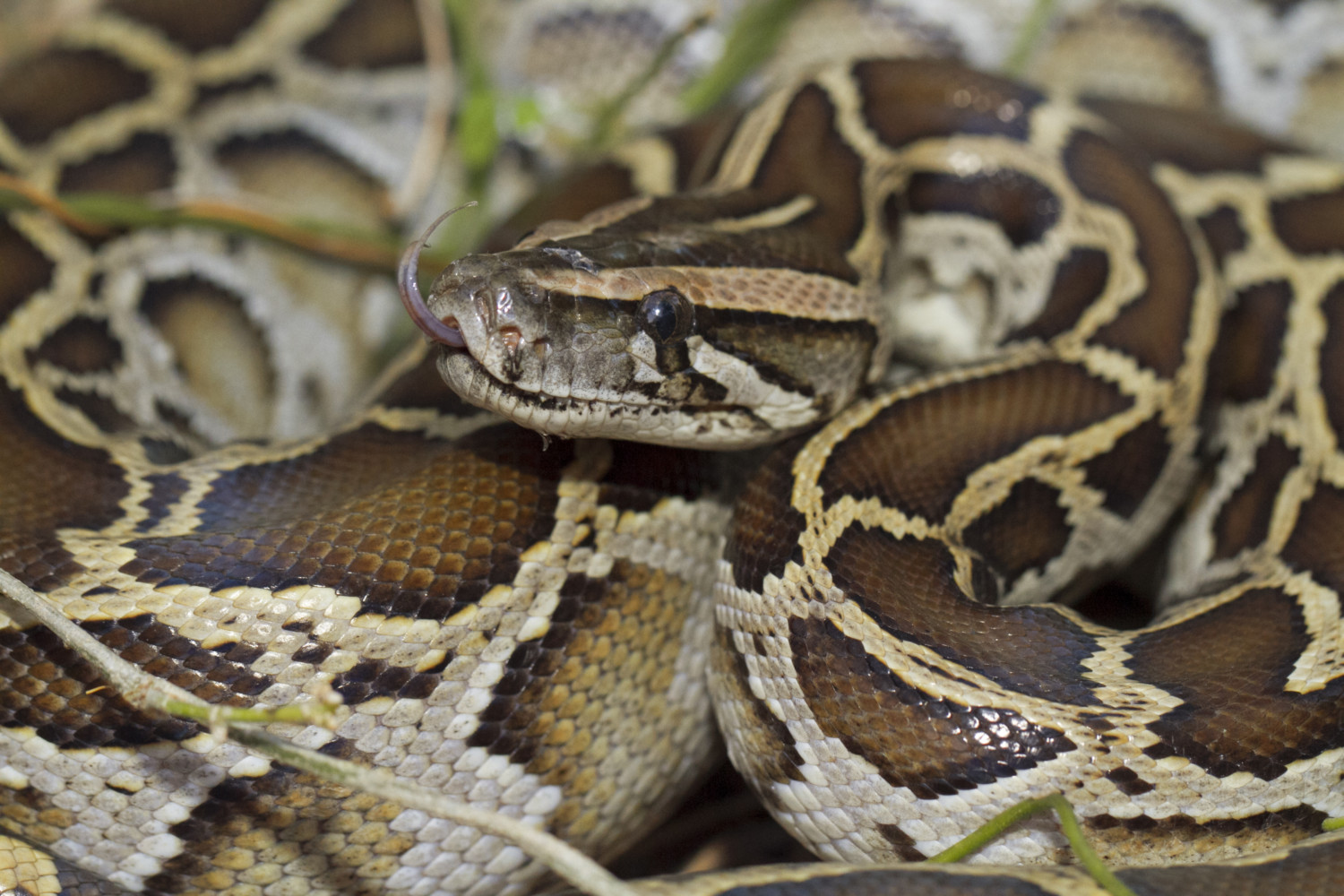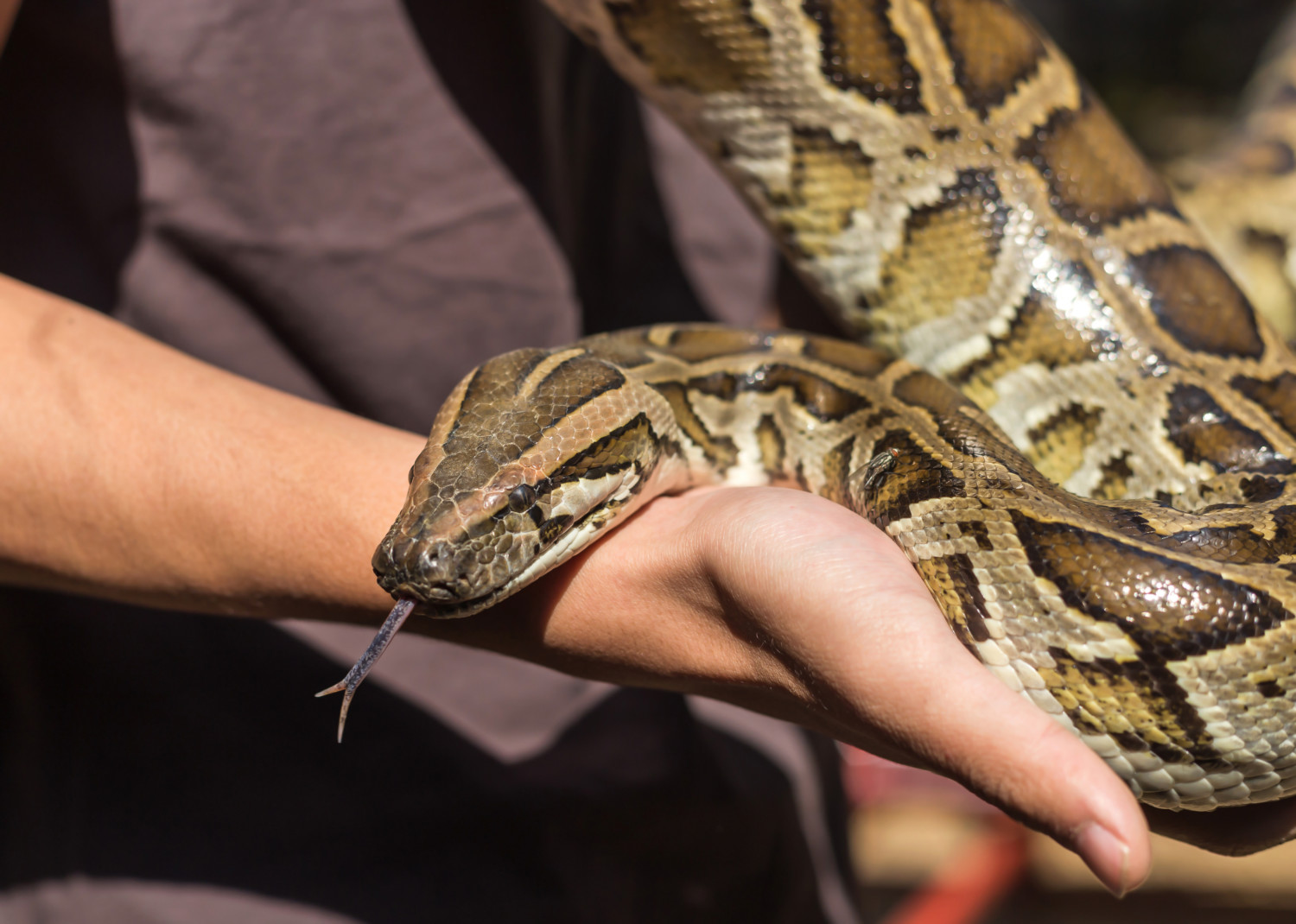South Florida has an ongoing Python Elimination Program in which trained agents hunt and remove many of the tens of thousands of invasive pythons living in the state’s wilderness. In an attempt to eliminate even more predatorial snakes, state officials are looking into whether the state’s Burmese pythons are safe for humans to eat.
That’s necessary because, before encouraging residents to hunt pythons as a mass food source, experts want to make sure they are not toxic. Like fish, the snakes are subject to carrying dangerous amounts of mercury. The Florida Fish and Wildlife Conservation Commission (FWC) is working with Florida Department of Health to develop guidelines and advisories for the safe ingestion of snake meat.

It’s important to find ways of controlling the Burmese python population, which may number in the hundreds of thousands in the Everglades. They are not native to the region — many were released pets. Yet they have decimated Florida’s population of small, native mammals. Eating them would build a demand for them that might help reduce their numbers in the wild.
It’s not unheard of for people to dine on snake meat. You can find it on restaurant menus and in home kitchens around the world. And it’s not that python meat is inherently dangerous, either. In fact, some of the people who hunt the animals also snack on the meat. Some make it into jerky and snack on the go, as Donna Kalil, a python hunter for the South Florida Water Management District, does.
“I eat that several times a week because I take it out with me on python hunts and I eat it out there,” Kalil told the Tampa Bay Times.
Kalil estimates that she’s eaten about a dozen pythons over the past few years, stating that her favorite method is to consume the meat with garlic, onions, pasta and sauce after preparing the snake in her pressure cooker. However, recommending the eating of pythons on a larger scale requires more careful consideration.

Although it is a naturally-occurring element, mercury is also a side effect of industry. The airborne element eventually reaches waterways and is ingested by wildlife. According to the Centers for Disease Control and Prevention, eating large amounts of mercury over time can damage the nervous system and cause congenital disabilities in babies.
Previous studies have shown that mercury levels are a concern in these big snakes. The Environmental Protection Agency recommends not ingesting anything with more than 0.46 parts per million of mercury. Researchers in a decade-old research found more than 100 times that level in some of the pythons tested.
“We were not used to seeing numbers like that,” U.S. Geological Survey research scientist David Krabbenhoft told the Palm Beach Post. “These guys are just loaded with mercury.”
However, the current effort could show people how to effectively minimize the risks by determining whether mercury contamination correlates with age and size and finding what areas may be safer for harvesting snakes.
Kalil uses a testing kit before eating any of her kill, and won’t eat large snakes because they may have more mercury content. She is grateful that the state is performing tests and developing safety guidelines for eating pythons.
“If they’re finding really high level of mercury in specific areas,” she told the Tampa Bay Times, “that means there’s something going on with our environment. And wouldn’t it be wonderful to use the pythons to determine where the pollutants are coming from and getting into the Everglades and be able to shut that down?”
Kalil calls python not an acquired taste, but “an acquired thought process.” Would you eat python?
This story originally appeared on Simplemost. Checkout Simplemost for additional stories.


